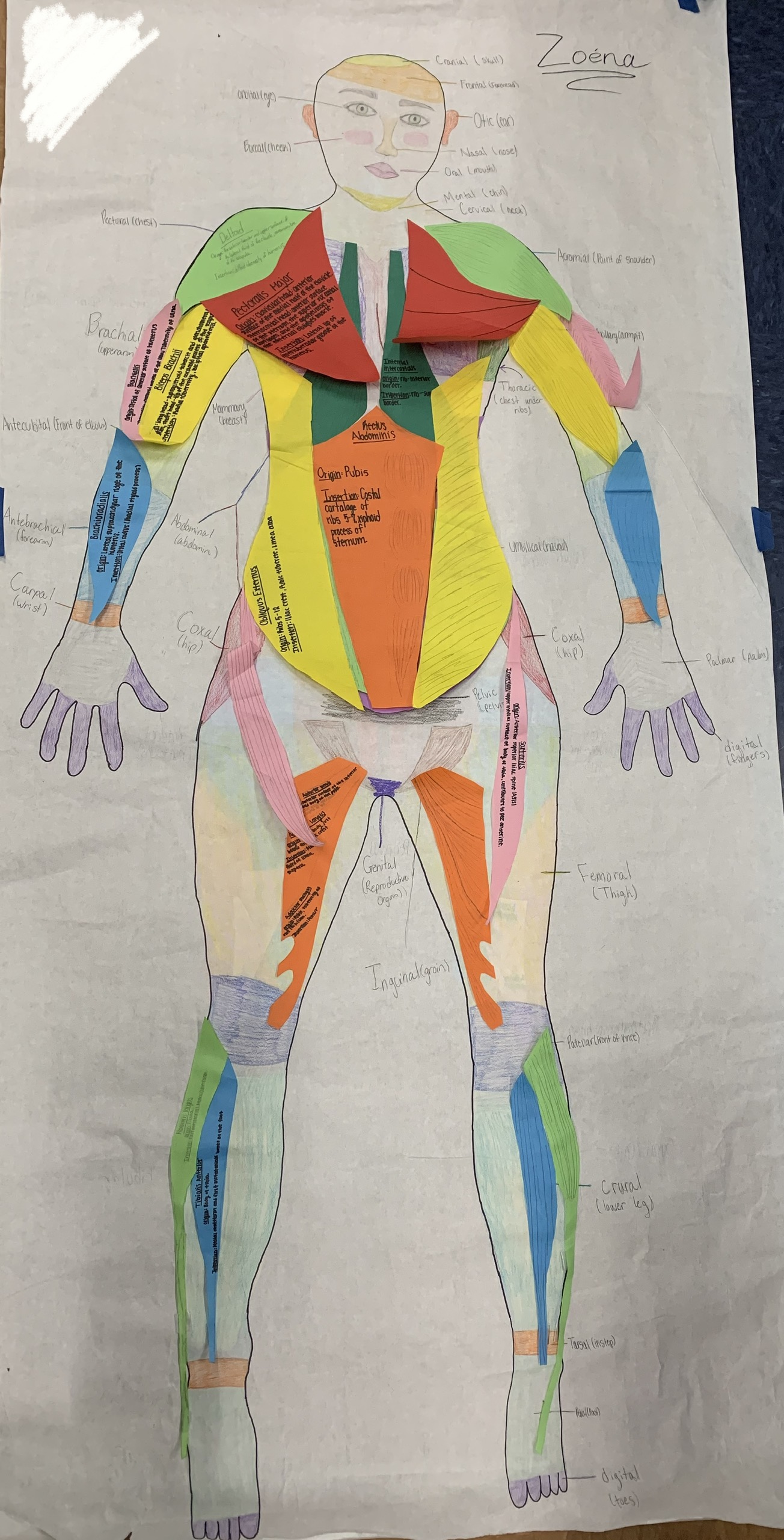Using what we learned (see Parts 1, 2, and 3, linked below) we connected the skeletal system, the muscular system, and the nervous system. Students chose a scenario involving the nervous system and prepared a 5-6 minute presentation describing the path a nerve impulse takes, starting (or ending) with a nerve impulse and ending (starting) with an action. The scenario focused on the muscles and also included the role of the skeletal and muscular systems, including tendons and ligaments.Some students chose the same scenario they used in Part 2 – muscles, and added the nervous system.
Students were encouraged to choose any appropriate format to present their work, including but not limited to, a slide show, video, illustrations, graphics, a poster, or any other format they chose and discussed with me before proceeding. They presented their work to a small group. The presentations were also linked to a Google doc that was shared with other students. Students reviewed the work of 3 other students. Reviewers did not assign any type of score to other students’ presentations. This is was individual assignment, although students were encouraged to discuss their work and progress with others as they found helpful. All their materials had to be readily accessed by anyone else in the class.
Here’s how students shared their work, from the Student Directions:
- Place all materials in a new folder named Nervous System Assessment within your @Anatomy folder.Be sure the folder sharing is set so anyone within our school can view.
- Add a document named Nervous System Collaboration – Lastname to the folder.
- Write an “Explain to Me Like I’m 5” paragraph describing your project.
- Ask for specific feedback on any part of your project.
- Make this doc editable by anyone in our school.
Before leaving comments, we discussed how to best give helpful feedback. We listed some sentence starters:
- I really liked…
- ______ helped me understand _______
- I have a question about….
- I’d like to see more……
- What I need to see to be more convinced is….
I wish I could share example projects, but they all had so much identifying info that I can’t do that. I can share links to the assignment docs. Here they are:
- Nervous System Final Asessment
- Link for students to post their projects and reviewers to leave their initials
The first 3 parts of this Learning Anatomy through Collaboration adventure:


